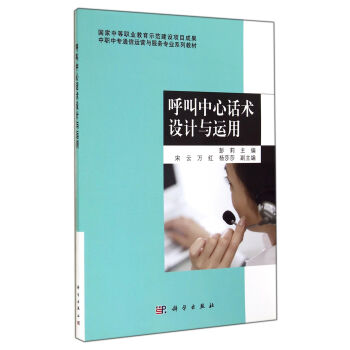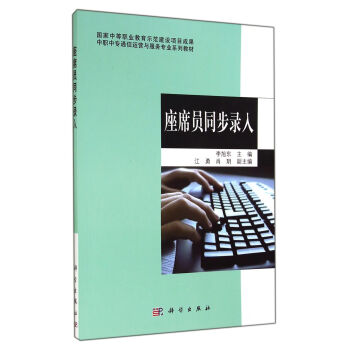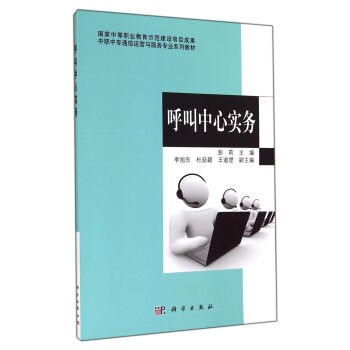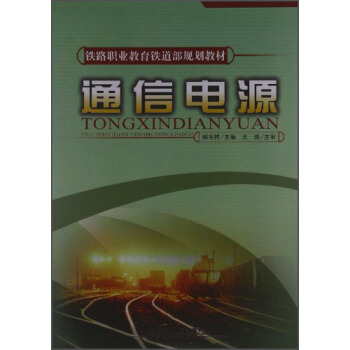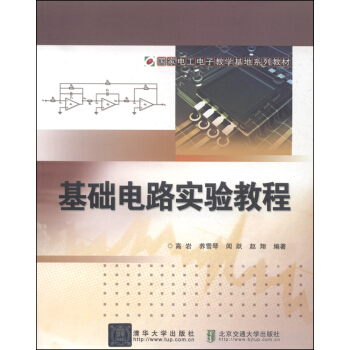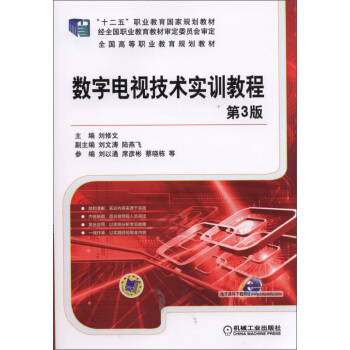

具體描述
內容簡介
《超導納米電子學基礎》從納米尺度的視覺解釋超導中的新現象,用於發明和改進神奇的納米電子器件與係統。內容包括奇數頻率配對、非均勻超導、π-位移等超導納米結構、納米器件中的復雜現象與理論模型。《超導納米電子學基礎》學術水平很好,屬於國際水平。對教學和科研有很大幫助。目錄
Contents1 “Fluctuoscopy” of Superconductors 1
A.A. Varlamov
1.1 Introduction 2
1.2 ThermodynamicSuperconductiveFluctuations Close to Tc0 3
1.2.1 Rather Rayleigh–Jeans Fields than Boltzmann Particles 3
1.2.2 Manifestation of SF Close to Tc 5
1.3 Ginzburg–LandauTheory 9
1.3.1 GL Functional 9
1.3.2 Zero Dimensionality: The Exact Solution for the Heat Capacity Jump 10
1.3.3 Zero Dimensionality: The Exact Solution for the Fluctuation Magnetization 13
1.3.4 Fluctuation Diamagnetism in Lead Nanoparticles 15
1.4 Fluctuation Thermodynamics of Layered Superconductorin Magnetic Field 17
1.4.1 Lawrence–DoniachModel 17
1.4.2 General Formula for the Fluctuation Free Energyin Magnetic Field 19
1.4.3 Fluctuation Magnetization of Layered Superconductorand its Crossovers 20
1.5 Fluctuation Conductivityof Layered Superconductor 23
1.5.1 Time-DependentGL Equation 23
1.5.2 GeneralExpression for Paraconductivity 25
1.5.3 Paraconductivityof a Layered Superconductor 27
1.5.4 In-Plane Conductivity 28
1.5.5 Out-of Plane Conductivity 29
1.5.6 Analysis of the Limiting Cases 29
1.5.7 ComparisonwiththeExperiment 31
1.6 Quantum SuperconductiveFluctuations AboveHc2.0/ 33 ix
1.6.1 DynamicClusteringofFCPs 33
1.6.2 Manifestation of QF Above Hc2 .0/ 35
1.7 Fluctuation Conductivity of 2D Superconductor in Magnetic Field: A Complete Picture 37 References 41
2 Experimental Study of the Fluctuation-Governed Resistive State in Quasi-One-Dimensional Superconductors 45 K.Yu. Arutyunov
2.1 Introduction 45
2.2 Theory Background 46
2.3 SampleFabrication 48
2.4 Experiments 51
2.5 Thermally Activated Phase Slips (TAPS) 53
2.6 Quantum Phase Slips 57
2.7 Conclusion 64
References 65
3 Crossed Andreev Re.ection and Spin-Resolved Non-local Electron Transport 67 Mikhail S. Kalenkov and Andrei D. Zaikin
3.1 Introduction 68
3.2 Spin-Resolved Transportin Ballistic Systems 70
3.2.1 Quasiclassical Equations 70
3.2.2 Riccati Parameterization 71
3.2.3 BoundaryConditions 72
3.2.4 Green Functions 75
3.2.5 Non-local Conductance:General Results 77
3.2.6 Cross-Current 80
3.2.7 CorrectiontoBTK 84
3.3 DiffusiveFSFStructures 86
3.3.1 Quasiclassical Equations 87
3.3.2 BoundaryConditions 89
3.3.3 Spectral Conductances 90
3.3.4 I–V Curves 95
3.4 ConcludingRemarks 98
References 99
4 Non-local Transport in Superconductor–Ferromagnet Hybrid Structures 101
D. Beckmann
4.1 Introduction 101
4.2 Experiments 103
4.2.1 F/S Point Contacts 103
4.2.2 Spin Accumulation 104
4.2.3 Charge Imbalance 106
4.2.4 CoherentSubgapTransport 108
4.2.5 F/S Tunnel Contacts 111
4.3 Discussion 114
References 115
5 Odd-Frequency Pairing in Superconducting Heterostructures 117
A.A. Golubov,Y. Tanaka, Y. Asano, and Y. Tanuma
5.1 Introduction 118
5.2 Junctions in the Dirty Limit 119
5.3 Junctions in the Clean Limit 122
5.4 Summary 129
References 129
6 Ferromagnetic Josephson Junctions with Critical Current Density Arti.cially Modulated on a “Short” Scale 133
N.G. Pugach, M.Yu. Kupriyanov, E. Goldobin, D. Koelle,
R. Kleiner, A.S. Sidorenko,and C. Lacroix
6.1 Introduction 134
6.2 Ferromagnetic Josephson Junctions with Step-Like Interface Transparency 137
6.2.1 Model for SIFS Junction 137
6.2.2 SIFNS and SINFS Structures 143
6.2.3 SIFNS Junction with Few Steps of BoundaryTransparency 147
6.2.4 SIFNSJunctionsArray 149
6.3 Method for the Reliable Realization of a 'Josephson Junction 157
6.3.1 Phase Averaging of Rapid Oscillations withaNon-SinusoidalCPR 157
6.3.2 Discussion of the 'Junction Conditions 162
6.4 Conclusion 167
References 168
7 Josephson Effect in SFNS Josephson Junctions 171 T.Yu. Karminskaya, M.Yu. Kupriyanov, A.A. Golubov, and A.S. Sidorenko
7.1 Introduction 171
7.2 Effective Decrease in the ExchangeEnergyin S-(FN)S Josephson Structures 173
7.2.1 Structure of S-FN-S Junction and its MathematicalDescription 173
7.2.2 Analysis of Inverse Coherence Lengths and Critical Current 177
7.3 Josephson Effect in S-FN-S Structures with Arbitrary Thickness of Ferromagneticand NormalLayers 182
7.3.1 Properties of Inverse CoherenceLength q 184
7.3.2 ThicknessDependenceoftheCriticalCurrent 189
7.3.3 Solution of Linearized Usadel Equations 193
7.3.4 CalculationofCriticalCurrent 195
7.4 New Geometryof SFNS Junctions 199
7.4.1 Critical Current of SN-N-NS Josephson Junction 201
7.4.2 Critical Current of Devices with F Film in Weal Link Region 202
7.4.3 Calculation of Supercurrentfor SNF-NF-FNS Junction 211
7.4.4 Calculation of Supercurrentfor SNF-N-FNS Junction 214
7.4.5 CalculationofSupercurrentforSN-NF-NSJunction 215
7.5 Conclusion 216
References 217
8 Physics and Applications of Superconducting Phase Inverters Based on Superconductor– Ferromagnet–Superconductor Josephson Junctions 219
V.V. Ryazanov
8.1 Introduction 219
8.2 SFS Junctions: Thickness and Temperature Dependencesof Josephson Ground States 221
8.3 Phase-Sensitive Experiments: Phase Inversion and SpontaneousMagneticFlux 227
8.4 Applicationsof SuperconductingPhase Inverters 239
References 246
9 Point-Contact Study of the Rare-Earth Nickel-Borocarbide RNi2B2C(R D Y,Dy,Ho, Er, Tm,Lu) Superconductors 249 Yu.G. Naidyuk and I.K. Yanson
9.1 Introduction 250
9.2 Experimental 250
9.3 Point-Contact Andreev-Re.ection Spectroscopy of the SuperconductingGap 251
9.4 PCSpectroscopyofElectron–Phonon(BOSON)Interaction 256
9.5 Conclusion 259
References 260
10 Integrated Submm Wave Receiver: Development and Applications 263 Valery P. Koshelets, Manfred Birk, Dick Boersma, Johannes Dercksen, Pavel Dmitriev, Andrey B. Ermakov, Lyudmila V. Filippenko, Hans Golstein, RuudW.M.Hoogeveen,LeodeJong,AndreyV. Khudchenko, Nickolay V. Kinev, Oleg S. Kiselev, Pavel V. Kudryashov, Bart van Kuik, Arno de Lange, Gert de Lange, Irina L. Lapitsky, Sergey I. Pripolzin, Joris van Rantwijk, Avri M. Selig, Alexander S. Sobolev, Mikhail Yu Torgashin, Vladimir L. Vaks, Ed de Vries, Georg Wagner, and Pavel A. Yagoubov
10.1 Introduction 264
10.2 Flux Flow Oscillators 266
10.2.1 Nb–AlN–NbN FFO 267
10.2.2 SpectralPropertiesoftheFFO 272
10.3 TELIS 280
10.3.1 TELIS Instrument Design 280
10.3.2 SIR Channel Design 283
10.3.3 TELIS-SIR Channel Performance 284
10.3.4 Kiruna Campaigns and Preliminary Science Results 289
10.3.5 SIR for NoninvasiveMedical Diagnostics 291
10.4 Summary 294
References 295
11 Cryogenic Phase-Locking Loop System Based on SIS Tunnel Junction 297
A.V. Khudchenko,V.P. Koshelets, and K.V. Kalashnikov
11.1 Introduction 298
11.2 CPD Properties 299
11.2.1 Phase Characteristics 301
11.2.2 Frequency Characteristics 301
11.2.3 Amplitude Properties 301
11.3 CPLL System: Description and ExperimentalResults 303
11.4 FFO Phase-Locking Directly by HM 306
11.4.1 On the Theory of HM 306
11.4.2 ExperimentalDemonstration 309
11.5 Conclusions 311
References 312
Conclusion 315
Bibliography (Some relevant books and reviews) 317
About the Editor 319
Index 321
精彩書摘
Chapter 1 “Fluctuoscopy” of SuperconductorsA.A. Varlamov
Abstract Study of .uctuation phenomena in superconductors (SCs) is the subject of great fundamental and practical importance. Understanding of their physics allowed to clear up the fundamental properties of SC state. Being predicted in 1968, one of the .uctuation effects, namely paraconductivity, was experimentally observed almost simultaneously. Since this time, .uctuations became a noticeable part of research in the .eld of superconductivity, and a variety of .uctuation effects have been discovered.
The new wave of interest to .uctuations (FL) in superconductors was generated by the discovery of cuprate oxide superconductors (high-temperature supercon-ductors, HTS), where, due to extremely short coherence length and low effective dimensionality of the electron system, superconductive .uctuations manifest them-selves in a wide range of temperatures. Moreover, anomalous properties of the normal state of HTS were attributed by many theorists to strong FL in these systems. Being studied in the framework of the phenomenological Ginzburg–Landau theory and, more extensively, in diagrammatic microscopic approach, SC FLs side by side with other quantum corrections (weak localization, etc.) became a new tool for investigation and characterization of such new systems as HTS, disordered electron systems, granular metals, Josephson structures, arti.cial super-lattices, etc. The characteristic feature of SC FL is their strong dependence on temperature and magnetic .elds in the vicinity of phase transition. This allows one to de.nitely separate the .uctuation effects from other contributions and to use them as the source of information about the microscopic parameters of a material. By their origin, SC FLs are very sensitive to relaxation processes, which break phase coherence. This allows using them for versatile characterization of SC. Today, one can speak about the “.uctuoscopy” of superconductive systems.
A.A.
Varlamov (.) Institute of Superconductivity and Innovative Materials of National Research Council (SPIN-CNR), Viale del Politecnico 1, I-00133, Rome, Italy e-mail: andrei.varlamov@spin.cnr.it
A.
Sidorenko (ed.), Fundamentals of Superconducting Nanoelectronics, NanoScience and Technology, DOI 10.1007/978-3-642-20158-5 1, . Springer-Verlag Berlin Heidelberg 2011
In review, we present the qualitative picture both of thermodynamic .uctuations close to critical temperature Tc0 and quantum .uctuations at zero temperature and in vicinity of the second critical .eld Hc2.0/. Then in the frameworks of the Ginzburg– Landau theory, we discuss the characteristic crossovers in .uctuation properties of superconductive nanoparticles and layered superconductors. We present the general expression for .uctuation magneto-conductivity valid through all phase diagram of superconductor and apply it to study of the quantum phase transition close to Hc2.0/. Fluctuation analysis of this transition allows us to present the scenario of .uctuation defragmentation of the Abrikosov lattice.
1.1 Introduction
“Happy families are all alike; every unhappy family is unhappy in its own way”, started Leo Tolstoy his novel “Anna Karenina”. A similar statement can be made about the electronic couples in superconductors (SCs): while stable Cooper pairs forming below critical temperature Tc0 a sort of condensate behave all in the same way, the behavior of the .uctuating Cooper pairs (FCPs) above the transition is complex and involves a lot of interesting physics. Such FCPs affect thermodynamic and transport properties of the metal both directly and through the changes which they cause in normal quasi-particle subsystem [1], and study of superconductive .uctuations (SF) presents the unique tool providing the information about the character of superconductive state formation [1]. Dif.culties of such “.uctuoscopy” are caused by the quantity of these quantum corrections, necessity of their separation from unknown background, smallness of their magnitude.
The mechanisms of .uctuations in the vicinity of the superconductive critical temperature Tc0 were deeply understood in 1970s. SFs are commonly described in terms of three principal contributions: Aslamazov–Larkin (AL) process, corre-sponding to the opening of the new channel of the charge transfer [2], anomalous Maki–Thompson (MT) process, which is a single-particle quantum interference on impurities in presence of SF [3–5], and the change of the single-particle density of states (DOS) due to their involvement in .uctuation pairings [6, 7]. The .rst two processes (AL and MT) result in appearance of positive and singular close to the superconductive critical temperature Tc0 contributions to conductivity, while the third one (DOS) results in decrease of the Drude conductivity due to the lack of single-particle excitations at the Fermi level. The latter contribution is less singular in temperature than the .rst two and can compete with them only when the AL and MT processes are suppressed by some reasons (e.g., c-axis transport in layered superconductors) or far enough from Tc0.
The classical results obtained .rst in the vicinity of Tc0 later were generalized to the temperatures far from transition [8–10] and relatively high .elds [11]. More recently, quantum .uctuations (QFs), taking place in SC at low temperatures and .elds close to the second critical .eld Hc2 .0/, entered the focus. Their manifestation strikingly differs from that one of thermal .uctuations close to Tc0: For instance, the direct contribution of FCPs to transport coef.cients here is absent. In [12, 13] was found that in granular SC at very low temperatures and close to Hc2 .0/,the positive AL contribution to magneto-conductivity (MC) decays as T2 while the .uctuation suppression of the quasiparticle density of states (DOS) by QF results in temperature independent negative contribution to MC logarithmically growing in magnitude when H !Hc2 .0/. Effects of QF on MC and magnetization of two-dimensional (2D) SC were studied at low temperatures and .elds close to Hc2 .0/ in [14]. Fluctuation renormalization of the diffusion coef.cient (DCR) results in appearance of a giant Nernst–Ettingshausen signal [15]. Moreover, as it was demon-strated recently [16] namely this contribution governs the behavior of .uctuation conductivity through all periphery of the phase diagram of superconductor and especially in the region of quantum phase transition in the vicinity of Hc2 .0/.
1.2 Thermodynamic Superconductive Fluctuations Close to Tc0
1.2.1 Rather Rayleigh–Jeans Fields than Boltzmann Particles
In the BCS theory [17, 18], only the Cooper pairs forming a Bose-condensate are considered. Fluctuation theory deals with the Cooper pairs out of the condensate. In some phenomena, these FCPs behave similarly to quasiparticles but with one important difference. While for the well-de.ned quasiparticle, the energy has to be much larger than its inverse lifetime, for the FCPs the “binding energy” /E turns out to be of the same order. The FCPs lifetime GL is determined by its decay into two free electrons. Evidently, at the transition temperature the Cooper pairs start to condense and GL D1. Above Tc0 GL can be estimated using the uncertainty principle: GL .=/E,where /E is the difference kB.T -Tc0/ensuring that GL should become in.nite at the point of transition. The microscopic theory con.rms this hypothesis and gives the exact coef.cient:
.
GL D : (1.1)
8kB.T -Tc/
Another important difference of the FCPs from quasiparticles lies in their large size .T/. This size is determined by the distance by which the electrons forming the FCPs move apart during the pair lifetime GL. In the case of an impure superconductor, the electron motion is diffusive with the diffusion coef.cient
pp
D vF2 ( is the electron scattering time [19]), and d.T/DD GL vF GL. In the case of a clean superconductor, where kBT ., impurity scattering no longer affects the electron correlations. In this case the time of electron ballistic motion turns out to be less than the electron–impurity scattering time and is determined by the uncertainty principle: bal .=kBT. Then this time has to be used in this case for the determination of the effective size instead of : c.T/
p
vF. GL=kBT. In both cases, the coherence length grows with the approach to the critical temperature as 1=2,where
TT -Tc
D ln (1.2)Tc Tc
is the reduced temperature. We will write down coherence length in the unique way
p
GL . /D .D GL/1=2 BCS= : (1.3)
Here, BCS D c;d is the BCS coherence length. We see that the .uctuating order parameter //.r;t/varies close to Tc0 on the large scale GL . / BCS.
Finally, it is necessary to recognize that FCPs can really be treated as classical objects, but that these objects instead of Boltzmann particles appear as classical .elds in the sense of Rayleigh–Jeans. This means that in the general Bose–Einstein distribution function only small energies E.p/are involved and the exponent can be expanded:
1kBT
n.p/DD : (1.4)
exp.E.p/=kBT/-1 E.p/
That is why the more appropriate tool to study .uctuation phenomena is not the Boltzmann transport equation but the GL equation for classical .elds. Nevertheless, at the qualitative level the treatment of .uctuation Cooper pairs as particles with the
R
.D/
concentration Ns D n.p/dDp=.2 ./D often turns out to be useful [20].
In the framework of both the phenomenological GL theory and the microscopic BCS theory was found that in the vicinity of the transition
p21
22
E.p/D kB.T -Tc/CD . =2 2.T/C p: (1.5)
2m 2m
Far from the transition temperature, the dependence n.p/ turns out to be more sophisticated than (1.4); nevertheless, one can always write it in the form
m kBT .T/p
n.p/D 2.T/f : (1.6)
2
The effective GL energy of the FCPs de.ned by (1.5) can be understood as the sum of its kinetic energy and the binding energy /E; which is nothing else as the chemical potential
C.p. .T/D Tc -T (1.7)
of the FCPs taken with the opposite sign:
p2
E.p/D- .T/:
2m
Let us clarify the issue related to the chemical potential of .uctuating Cooper pairs, C.p Indeed, it is known that in the thermodynamic equilibrium, the chemical potential of a system with a variable number of particles is zero, with photon and phonon gases being the textbook examples. A na¨.ve application of this “theorem” to .uctuating Cooper pairs “gas” leads to a wrong conclusion that C.p. D0.However, a delicate issue concerning Cooper pairs is that they do not form an isolated system but are composed of the fermionic quasi-particles, which constitute another subsystem under consideration. In a multicomponent system, the chemical potential of the i’th component, i, is de.ned as the derivative of the thermodynamic potential with respect to the number of particles of i-th sort:
i D.@=@Ni/P;V;Nj ; (1.8)
provided the numbers of particles of all other species are .xed, Nj¤i Dconst. In deriving the condition for thermodynamic equilibrium, one should now take into account that creation of a Cooper pair must be accompanied by removing two electrons from the fermionic subsystem. This leads to C.p. -2 q:p: D0, where q:p: is the chemical potential of quasi-particles. Therefore, the equilibrium condition does not restrict C.p.to zero, even though the number of Cooper pairs is not conserved.
1.2.2 Manifestation of SF Close to Tc
In classical .eld theory, the notions of the particle distribution function n.p/(pro-portional to E1.p/in our case) and Cooper pair mass m are poorly determined. At the same time, the characteristic value of the Cooper pair center of mass momentum can be de.ned and it turns out to be of the order of p0 .= .T/.So for the
2
combination m E.p0/ one can write m E.p0/ p .2= 2.T/. The ratio of
0
the FCPs concentration to the corresponding effective mass with the logarithmic accuracy can be expressed in terms of the coherence length:
.D/
D
Ns kBTp0 kBT
2D
D 2 .T/ (1.9)
GL
mm E.p0/
D
(p here estimates the result of momentum integration).
0
The particles’ density enters into many physical values in the combination N=m . For example, we can evaluate the direct FCPs contribution to conductivity (Aslamazov–Larkin paraconductivity) by using the Drude formula and noting that the role of scattering time for FCPs plays their lifetime GL:
Ns.D/ e2 GL. / kBT
. AL D m).dD3 2D.T/.2e/2 GL. / D=22: (1.10)
.D/ 2 GL
This contribution to conductivity of the normal phase of superconductor corre-sponds to opening of the new channel of charge transfer above Tc: due to forming in it FCPs.
Analogously, a qualitative understanding of the increase in the diamagnetic susceptibility above the critical temperature may be obtained from the – known Langevin expression for the atomic susceptibility [21]:
.D/
e2n 4e2
skBT
. C.p D-cmR2 )-c.dD3 4D.T/ - D=22: (1.11)
2 22
Here, we used the ratio (1.9).
Special attention has been attracted recently by the giant Nernst–Ettingshausen effect observed in the pseudogap state of the underdoped phases of HTSC [22], which motivated speculations [23] about the possibility of existence of some speci.c vortices and anti-vortices there or the special role of the phase .uctuations [24]. Then, very recently the giant Nernst–Ettingshausen signal (three orders of mag-nitude more than the value of the Nernst–Ettingshausen coef.cient in typical metals) was detected also in the wide range of temperatures in a conventional disordered superconductor NbxSi1x [25]. All these experiments .nally have been successfully explained in the frameworks of both phenomenological and micro-scopic .uctuation theories [15,26,27]. The proposed qualitative consideration of the FCPs allows not only to get in a simple way the correct temperature dependence of the .uctuation NEE coef.cient but also to catch the reason of its giant magnitude. Indeed, as it was shown in [15, 28], the Nernst–Ettingshausen coef.cient can be related to the temperature derivative of the chemical potential:
d
.N C.p D
: (1.12)
nce2 dT
Applying this formula to the subsystem of FCPs close to Tc0 with C.p. .T/de.ned by (1.7) and identifying its conductivity with (1.10), one .nds
.C.p./ .N C.p D- D=22
.D/ ; (1.13) Ns ce2
what .ts well the experimental .ndings obtained in conventional superconductors and optimally doped phases of HTS. The reason of so strong .uctuation effect contains in the extremely strong dependence of the FCPs chemical potential on temperature: d C.p.=dT D-1, while for the free electron gas d e=dT -T=EF:
Besides the direct FCPs effect on properties of superconductor in its normal phase, the other, indirect manifestations of SF and their effect on the quasi-particle subsystem take place. These effects, being much more sophisticated, have a purely quantum nature and, in contrast to paraconductivity, require microscopic consideration. First of them is MT contribution [3–5]. It is generated by the coherent scattering of the electrons forming a Cooper pair on the same elastic impurities
前言/序言
用戶評價
這本書給我帶來的震撼,可以用“撥雲見日”來形容。長久以來,我總覺得超導性和納米電子學是兩個相對獨立的領域,直到我翻開瞭這本書,纔真正體會到它們之間韆絲萬縷的聯係,以及融閤後所産生的巨大能量。作者在書中以一種非常具有啓發性的方式,探討瞭量子退相乾、量子隧穿以及納米結構中的電子相乾性等關鍵概念,並且將這些抽象的物理現象與超導體的獨特屬性相結閤。我特彆被書中對量子相乾態的維持和調控的討論所吸引,這對於構建穩定可靠的量子器件至關重要。書中關於超導量子比特的各種實現方案,以及它們在量子計算中的優勢和挑戰,都讓我對未來的計算範式有瞭全新的認識。盡管我可能對其中一些更深層次的量子物理概念還需要反復研讀,但這本書無疑為我提供瞭一個全新的視角,讓我能夠從更本質的層麵去理解和思考超導納米電子學的潛力。
評分《超導納米電子學基礎》這本書,像是一位經驗豐富的老者,循循善誘地引領我走進一個充滿未知的奇妙世界。作者在書中對於超導機理的闡述,並沒有故作高深,而是用一種充滿智慧和洞察力的方式,將復雜的物理現象分解,然後以一種易於理解的語言呈現齣來。我尤其欣賞書中對於超導相乾性在納米尺度下如何錶現的詳細講解,這讓我深刻理解瞭量子力學在微觀世界中的統治地位。書中對於新型超導材料的介紹,以及它們在不同應用場景下的優劣分析,也讓我對這個領域的發展趨勢有瞭更直觀的認識。我特彆被書中關於超導傳感器在高靈敏度探測方麵的應用所吸引,這讓我看到瞭其在科學研究和工業應用中的廣闊前景。盡管我可能無法完全掌握書中所有的數學推導,但我相信這本書為我構建瞭一個紮實的知識基礎,讓我能夠自信地繼續探索這個充滿挑戰和機遇的領域。
評分作為一名在電子工程領域工作的工程師,我一直對新興技術保持著高度的關注。當我在書店看到《超導納米電子學基礎》這本書時,立刻被它的標題所吸引。讀完後,我發現這本書的內容遠超我的預期。作者在書中並沒有停留在對基礎概念的羅列,而是花瞭相當大的篇幅去探討超導材料在納米電子器件中的實際應用。我尤其對書中關於超導量子乾涉儀(SQUID)在生物磁學和高精度測量中的應用分析感到印象深刻,書中對不同SQUID構型優缺點的比較,以及噪聲抑製策略的討論,都為我理解這類精密儀器的設計思路提供瞭寶貴的藉鑒。此外,書中對超導單電子晶體管(SET)在信息存儲和處理方麵的潛力的展望,也讓我看到瞭超導技術在未來高性能計算領域的光明前景。盡管我可能無法深入到每一個公式推導的細節,但書中清晰的邏輯和豐富的實例,讓我對超導納米電子學的核心思想有瞭整體的把握,也讓我對接下來的相關技術發展充滿瞭期待。
評分這本書的齣現,無疑是為我這樣在超導材料領域摸索多年,卻對納米電子學應用感到一絲迷茫的研究者注入瞭一針強心劑。作者在書中對超導機理的解析,雖然不是顛覆性的新理論,但其梳理得條理清晰,邏輯嚴謹,特彆是關於BCS理論的闡釋,讓我對配對機製有瞭更深刻的理解。更為重要的是,書中將這些宏觀的超導物理概念,巧妙地與納米尺度的電子輸運、量子相乾性以及器件設計緊密結閤起來。我尤其被書中關於超導約瑟夫森結在量子計算中的應用章節所吸引,其中對量子比特的實現方式、退相乾機理的探討,以及提高量子比特穩定性的策略,都具有極高的參考價值。書中列舉的案例和模擬結果,也讓我對如何優化納米超導器件的性能有瞭更清晰的方嚮。雖然書中在一些器件製備的細節上可能略顯概括,但我相信對於一個有一定基礎的讀者來說,這本書提供的理論框架和前沿思路,足以激發無限的創新靈感,指引我進行更深入的探索。
評分這本《超導納米電子學基礎》著實讓我大開眼界。雖然我並非該領域的專傢,但作者以一種非常易於理解的方式,將那些原本聽起來高深莫測的物理概念娓娓道來。書中對於超導現象的起源、基本理論框架,以及在納米尺度下,這些效應如何被操控和利用,都進行瞭深入淺齣的闡述。我尤其欣賞作者在解釋量子力學原理時所采用的比喻和類比,這極大地降低瞭我的閱讀門檻,讓我能夠更直觀地理解電子的奇特行為。書中穿插的許多經典實驗和最新研究進展,也為我描繪瞭一幅超導納米電子學波瀾壯闊的發展圖景。從理論的嚴謹性到實踐的指導性,這本書都做得非常齣色,讓我對這個前沿領域産生瞭濃厚的興趣,並且開始思考其在未來科技發展中的巨大潛力。盡管我尚未完全消化書中的所有細節,但我已經迫不及待地想深入探索其中的奧秘,並希望未來有機會能將其中的知識應用到實際的科學研究中。這本書的齣現,無疑為我對這一交叉學科的認知打開瞭一扇新世界的大門。
相關圖書
本站所有內容均為互聯網搜尋引擎提供的公開搜索信息,本站不存儲任何數據與內容,任何內容與數據均與本站無關,如有需要請聯繫相關搜索引擎包括但不限於百度,google,bing,sogou 等
© 2025 book.cndgn.com All Rights Reserved. 新城书站 版權所有








![胚胎型仿生自修復技術 [Embryonic Bio-inspired Self-healing Technology] pdf epub mobi 電子書 下載](https://pic.qciss.net/11553362/54388513N9b07cda3.jpg)
![數字電子技術基礎/高等學校電子信息類專業係列教材·教育部高等學校電子信息類專業教學指導委員會規劃教材 [Fundamentals of Digital Electronics] pdf epub mobi 電子書 下載](https://pic.qciss.net/11566385/54503df7N5e5ee052.jpg)

